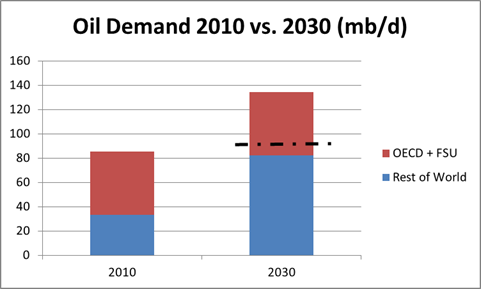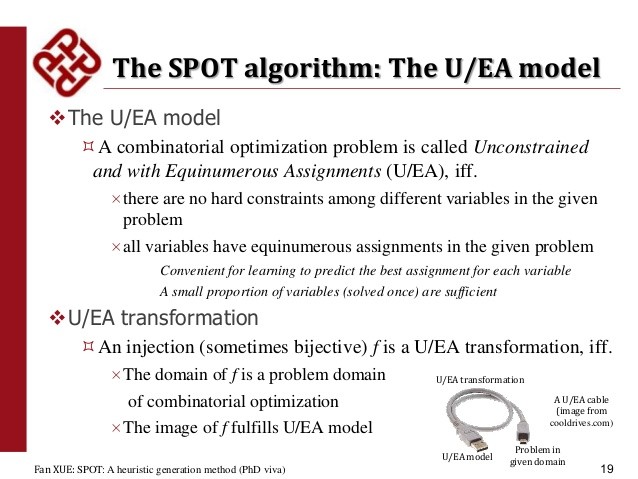The Problems With Trying To Benchmark Unconstrained Portfolios (Guest Post)
Post on: 26 Июль, 2015 No Comment

Choosing A Benchmark For Unconstrained Portfolios
Pinnacle’s not-fully-satisfactory solution to the problem of needing to benchmark our five unconstrained portfolio strategies is to throw up our hands and choose the simplest two asset class blended benchmarks we can think of, which are comprised of the S&P 500 Index and the Barclay’s Aggregate Bond Index. In a recent presentation, Carl Noble, CFA, Pinnacle’s international analyst, gave us some other examples of fund companies wallowing in this unfamiliar territory. The choice of benchmarks seems arbitrary. Notably, when utilizing benchmarks constructed of traditional asset classes like stocks and bonds, any allocation in alternative investments like hedge funds, managed futures, and private equity, or other alternative asset classes with presumably low correlations to stocks and bonds such as gold, real estate, and commodities, would constitute what we call “benchmark risk.” Benchmark risk is deciding to own asset classes not contained in your benchmark that could cause you to have relative underperformance due to low correlation to the asset classes in your benchmark. Noble’s examples included:
GMO Asset Allocation Fund. Benchmark is GMO’s Global Balanced Index of 65% MSCI All-Country World Index and 35% Barclays Aggregate Bond Index. (Note: Alternative investments were recently 16% of their total portfolio.)
Blackrock Global Allocation Fund. 36% S&P 500, 24% FTSE World ex-US, 24% BOA ML 5-YR US Treasury Bond, and 16% Citigroup Non-US Dollar World Government Bond Index
Ivy Asset Strategy: At Ivy, they apparently don’t show any custom blended benchmark for the portfolio, but instead present portfolio returns and then separately present S&P 500, BarCap US Aggregate, BarCap US T-Bill 1-3 month, and Lipper Global Flexible Portfolio returns.
I can certainly understand in the case of Ivy, why you would want to show your performance without presenting a blended benchmark. Unfortunately, though, even if you don’t offer a blended benchmark, the industry will be sure to give you one — how else can a prudent potential investor determine if the fund’s management is adding value for its cost?
Finding The Right Benchmark
Some seem to think that this difficult decision about choosing a benchmark rises to the level of a conspiracy by money managers to mislead investors into thinking they are generating excess returns (by selecting an ‘easy’ benchmark to beat) when in fact they are not (when compared to a ‘more appropriate’ benchmark), although in a word of arbitrary benchmarks the difference is not always clear. This notion of seeing the world through the lens of money managers who misuse benchmarks in order to show excess returns was reinforced to me at the recent FPA Retreat where I spoke on the topic of tactical asset allocation. Afterwards, an animated discussion ensued with a financial planner who passionately described the process of finding the correct benchmark for money managers as (my words here) correcting a fraud being perpetuated on the investing public. When asked how he would create a benchmark for Pinnacle’s completely unconstrained portfolio construction, he answered that he would probably take what we owned ex-post and then “average it out” in order to create the proper benchmark. His particular take was once the “proper” benchmark was applied, most money managers would see their alpha disappear. His job, of course, was to help his clients find the “correct” benchmark.
This advisor’s methodology is actually quite popular. I happen to sit on the Finance and Investment Committee of our local community college Foundation Board, where the majority of portfolio assets are managed by the University System of Maryland Foundation (USMF), which aggregates Foundation money from 21 different Maryland universities and community colleges into one sophisticated portfolio. As a new Board member, I was fascinated to see how they reported portfolio returns. The portfolio is very much in the camp of an “Endowment Model” construction, with the current asset allocation being 12% Bonds and Cash, 27.7% Public equity, 12.1% Private Capital, 24% Real Assets divided between energy and natural resources and REITS, and 24% Multi-Strategy meaning hedge funds and fund of funds. How does USMF present the benchmarks for this eclectic portfolio? First they show an 80-20 mix of S&P 500 Index and 20% BarCap Bonds, which seems completely irrelevant to what the managers are trying to accomplish…I think. But more interestingly, they also present a “composite benchmark” that is determined by using the asset allocation of the fund at the beginning of each month and then calculating returns for the composite portfolio based on indexing each asset class. At the end of the month they compare the returns of the portfolio to the composite benchmark. By repeating this process every month they effectively rob the USMF managers of any opportunity to add excess returns by changing their asset allocation month to month, and confine the ability to earn alpha to the underlying managers in each asset class. This notion of changing the benchmark ex-post sounds very similar to the advisor I met at Retreat, and it also sounds similar to those who rely on performance-based style analysis to do the same thing.
In fact, Solow and Kitces made this very point in an article penned for Advisor Perspectives in August 2010 titled, “When Active Management Matters .” Our article offered several criticisms of an article by Roger Ibbottson, et. al. that appeared in the Financial Analyst Journal in March/April of 2010 titled, “The Equal Importance of Asset Allocation and Active Management .” In the paper Ibbottson used performance-based style analysis to reach the conclusion that 80% of fund manager returns were due to “market” returns, and the remaining 20% of returns were split 50-50 between investment policy and active management. In our response we pointed out that for global unconstrained managers where being unconstrained meant being free to change portfolio asset allocation, as opposed to just being flexible within a single asset allocation, the ex-post regression analysis would grossly distort the analysis.
The Problem With Ex-Post Regression Analysis

While an ex-post regression analysis helps to understand what a fund has owned in an attempt to determine how to benchmark it, such a process creates significant problems when applied to an eclectic manager who is free to actually change portfolio policy on an ongoing basis. The approach can unfairly reduce the excess positive returns earned by the manager, and also potentially hide the bad decisions of a poor manager as well.
For instance, imagine a manager who owned the S&P 500 from 1996 to 1999, the Russell 2000 from 2000 to 2002, an emerging markets index from 2003 to 2008, and gold from 2009 to 2011. By picking one of the top asset classes every year for 15 years, the manager would have generated extraordinary returns. However, if the manager was benchmarked on an ex-post basis to each asset class owned in any particular year, the manager would appear to have an alpha of 0% each and every year – because the real value the manager delivered was not generating alpha within the asset class owned relative to a benchmark, but by changing the asset class (and the ex-post benchmark along with it!) at each turn of the market cycle. And the manager would be indistinguishable from a second one who owned bonds from 1996 to 1999, large cap stocks from 2000 to 2002, bonds again from 2003 to 2008, and large cap stocks again from 2009 to 2011 – even though this manager would have accumulated an incredible trail of negative returns and produced radically less wealth for clients. In both cases, if the managers owned their indices for any particular year, their alpha would be 0% — even though, clearly, when viewed across asset classes the first manager generated incredible positive alpha, while the second generated comparably incredible negative alpha.
Choosing A Benchmark In The Real World
So here we are. Pinnacle Advisory Group, a portfolio manager that is completely unconstrained by asset class targets, can choose a completely arbitrary benchmark, or we can choose to allow the industry to pick a benchmark for us, which seems to take the form of either averaging our actual allocations ex-post and assigning benchmark indices to each allocation, or using performance-based style analysis which uses mathematical regressions to determine, ex-post, what our asset allocation “should” have been. Alternatively, we might try to benchmark to the client’s financial planning goals, but in practice this communicates to the client as though we have an absolute positive return benchmark (which is unrealistic and poor expectations management), and does nothing to really measure whether Pinnacle as an investment manager is adding value relative to simply choosing to index instead. In the end, none of the options seem particularly appealing; at times, it almost seems better simply not to report a benchmark at all.
Nonetheless, it is also reasonable, as a consumer of investment management, to insist on a sensible method for comparing performance results to a benchmark in order to evaluate how a particular money manager is performing. Unfortunately, in our case, when the portfolio is unconstrained by asset class targets, it seems that we must ask our clients to fully understand the limitations of the benchmarking process, in addition to fully understanding our prior investment performance in the context of a complete market cycle, and to fully understand our process for actually finding value in dangerous and volatile financial markets.














